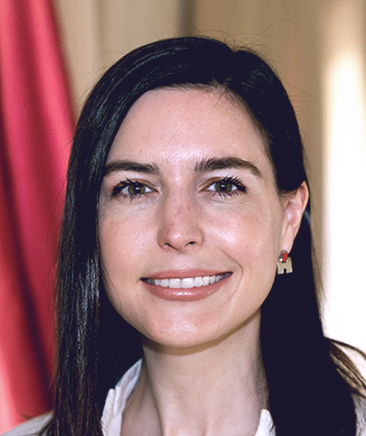In September 2022, the European Union took another step toward creating a more competitive landscape for biologics by issuing clear guidance on interchangeability for its member countries. The joint EMA-HMA statement seeks to reduce uncertainties that prescribers may have when deciding to prescribe biologics.
The new guidance states:
… once a biosimilar is approved in the EU it is interchangeable, which means the biosimilar can be used instead of its reference product (or vice versa) or one biosimilar can be replaced with another biosimilar of the same reference product.
The EMA-HMA’s scientific rationale for the guidance is straightforward: Through their review of more than one hundred biosimilar candidate submissions and over 15 years of reviewing product safety in the market, approved biosimilars have demonstrated comparable efficacy, safety and immunogenicity compared with their reference products. Additional systematic switch studies are not required to support the interchangeability at a prescriber level.
It’s now up to EU member country health systems to decide if they will make substitutions based on factors such as price and supply. And because the guidance on interchangeability affects all biologics, a likely byproduct is the erosion of the market starting with reference products, similar to what manufacturers experience with automatic substitution in the small molecule generic landscape.
As a biologics manufacturer, you must consider how the competitive landscape is shifting. And as such, you’ll need to make different assumptions about price and volume erosion as competitors enter your markets.
No-regrets actions
In the short run, you can adjust earlier assumptions supporting asset valuation, including country-by-country positions on dispensing or automatic substitution. Taking this step helps you model the probabilities of future revenue pressure.
It’s important to note that switching among biological products in clinical practice is already common in the region—the guidance is meant to instill additional confidence for further action at the local level. The EMA-HMA statement doesn’t change automatic substitution at the pharmacy level, either. Those dispensing decisions are the responsibility of the EU members’ health systems and are made independently.
4 scenarios for the future
Both the EU and the U.S. have multiple efforts underway to make the biologics market more competitive, so manufacturers must consider the EU’s recent guidance in the context of those evolving dynamics.
With this guidance, the EU has set the stage for at least four possible scenarios to develop—each has different factors, but you should consider them all together.
Scenario 1: The U.S. market takes a similar path
In this world, the U.S. sees the EU's regulatory approach as directionally sound and takes bold steps to drive higher competition in the U.S. market.
Although unlikely to happen in the near term, the core issue in the U.S. is about a shift away from requiring switch studies to achieve interchangeability status and toward the automatic interchangeability of brands for therapeutic equivalents. Should U.S. policy move in this direction, brand manufacturers can expect a swift erosion of market share upon loss of exclusivity and the need to become more competitive.
Even so, the U.S.’s interest in biologics has already improved adoption and created somewhat higher competition due to physicians’ positive real-world experiences and the country’s robust appetite to curb drug spending. To date, we see two policy efforts worth watching as this story continues:
- The U.S. FDA's educational efforts, combined with added incentives for physicians to use biosimilars through the Inflation Reduction Act of 2022 (HR 5376), may improve physician confidence and use, particularly of hospital-administered products. Adoption will accelerate further if the U.S. sees evidence around biosimilar-to-biosimilar switching.
- U.S. regulators could move toward communicating the substitutability of interchangeable biosimilars with therapeutic equivalence ratings in the Purple Book (see The Biologics Competition Act of 2022, HR 8877). This step would create a coded system for substitutability, making it more likely substitution happens at the pharmacy for self-administered products, which, in effect, puts them in a generic category.
Scenario 2: Some classes of biosimilars find better market acceptance than others
In this world, country-level desires to keep costs in check across the EU act as a counterweight to physicians’ comfort with existing products.
While some physicians still have back-of-mind concerns over switching, their concerns abate as health systems encourage switching, and biosimilar companies help them become more comfortable with it, particularly in specific therapy areas.
Under this scenario, biologics manufacturers begin to monitor the classes of biosimilars where switching may offer the right balance of physician comfort and price.
Manufacturers should expect health systems to look at the benefits of switching along three distinct lines:
- Short-course therapies with set regimens. The nature of these regimens gives health systems an easy path to enforce using biosimilars and become bolder with their substitution practices.
- Non-chronic, longer-course therapies. This category includes patient populations on a set regimen and ongoing maintenance, yet unlikely chronic (think oncology or heme treatments that last several months or are within the maintenance setting). Here, physicians are unlikely to switch patients during the maintenance phase of their treatments, but as they take on new patients, their health systems may encourage them to start with biosimilars.
- Chronic. Physicians treating patients with chronic diseases, including those suffering from RA, PsA and MS, are likely to remain cautious about switching stable patients as it may raise back-of-mind immunogenicity questions. Here we could see different approaches for indications based on the risk of immunogenicity or flare-ups. Still, health systems will likely encourage physicians to switch to indications where immunogenicity is not a big concern and start new patients with biosimilars. This category presents the greatest likelihood of physician and patient push-back on switching.
Scenario 3: Patients question switching
Large health systems are active switchers, increasing the need for patient support in this world. As a result, it becomes more important for manufacturers to focus on easy-to-use experiences, particularly with patients who use self-injectables for chronic conditions.
Is the dose correct? Is the app harder to use? Does the device cause pain? Manufacturers should expect patients to voice concerns if the experience is confusing or changes their routines in ways that inconvenience them.
Under this scenario, patient acceptance and satisfaction will rely heavily on the following:
- Positive brand recognition
- Healthcare providers’ willingness to answer questions related to switching, especially when self-injection devices change
- A strong baseline of support programs
Health systems may reward manufacturers who can provide real-world evidence demonstrating how patients prefer to stay on their products and not return to others they’ve used before. We may also see stronger success for products with the easiest-to-use self-injection devices when all else is equal.
Scenario 4: Select players own the trade channels
In this world, switching becomes more automatic, price rules and all manufacturers compete in a more generic-like environment. A few players seek to leverage trade channels with pharmacies, clinics and hospitals to win access, as we tend to see in generics markets.
Under extreme conditions, some manufacturers may determine that their original products are no longer worth defending. Others may decide products in the pipeline are not worth launching.
Under this scenario, biologics manufacturers work toward balancing today’s investments in traditional branded marketing with improving price and trade relationships across trade channels, including health systems, group purchasing organizations, distributors, major pharmacy chains and specialty pharmacies. They also center their supply chain goals on improving relationships with the supply community to ensure reliability and quality to help them stay competitive.
Plan your future
The EU’s guidance shows change is happening. To plan, you’ll need to recognize a dynamic future where multiple scenarios could play out at once. No matter your starting point, you can rethink old assumptions and remain agile through the next wave of market change.
Add insights to your inbox
We’ll send you content you’ll want to read – and put to use.

















